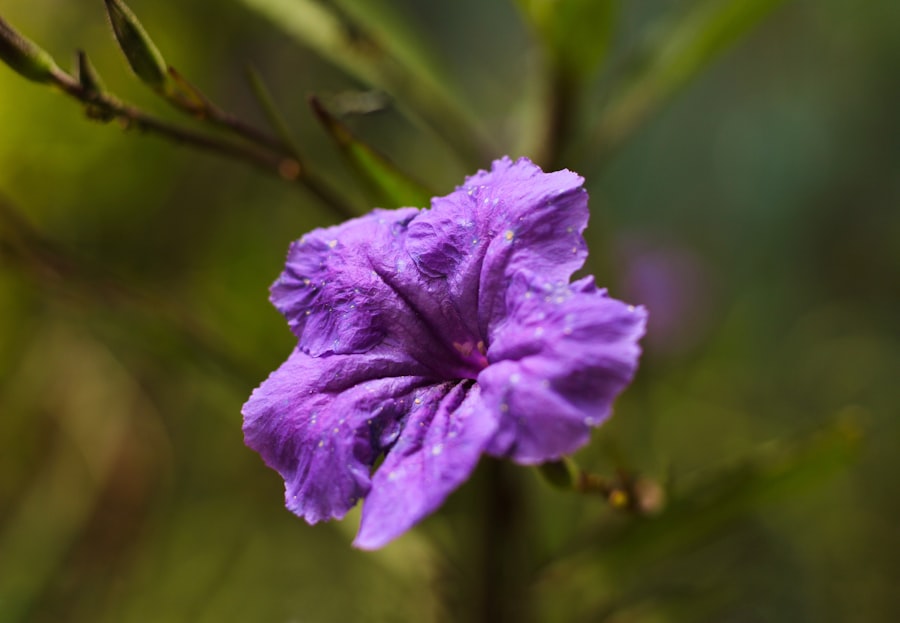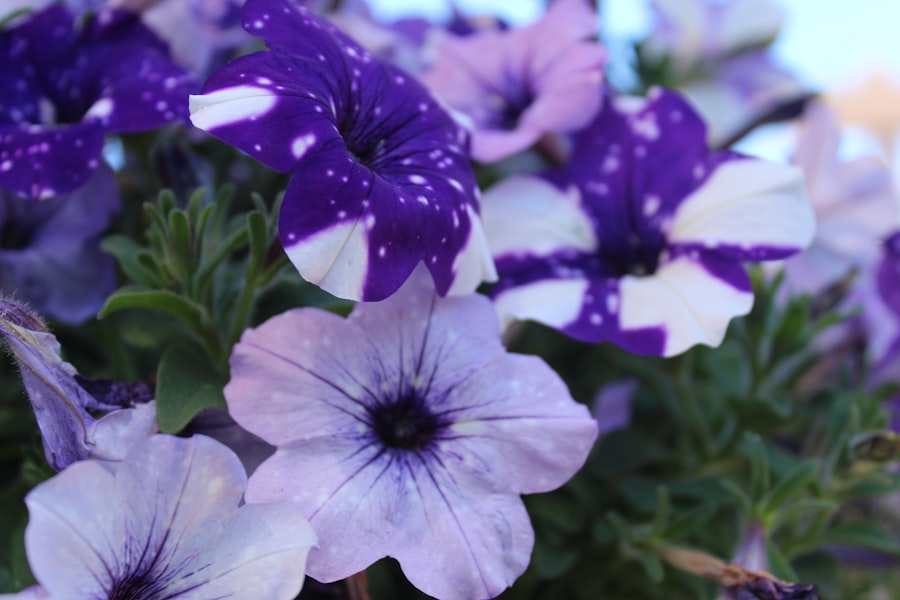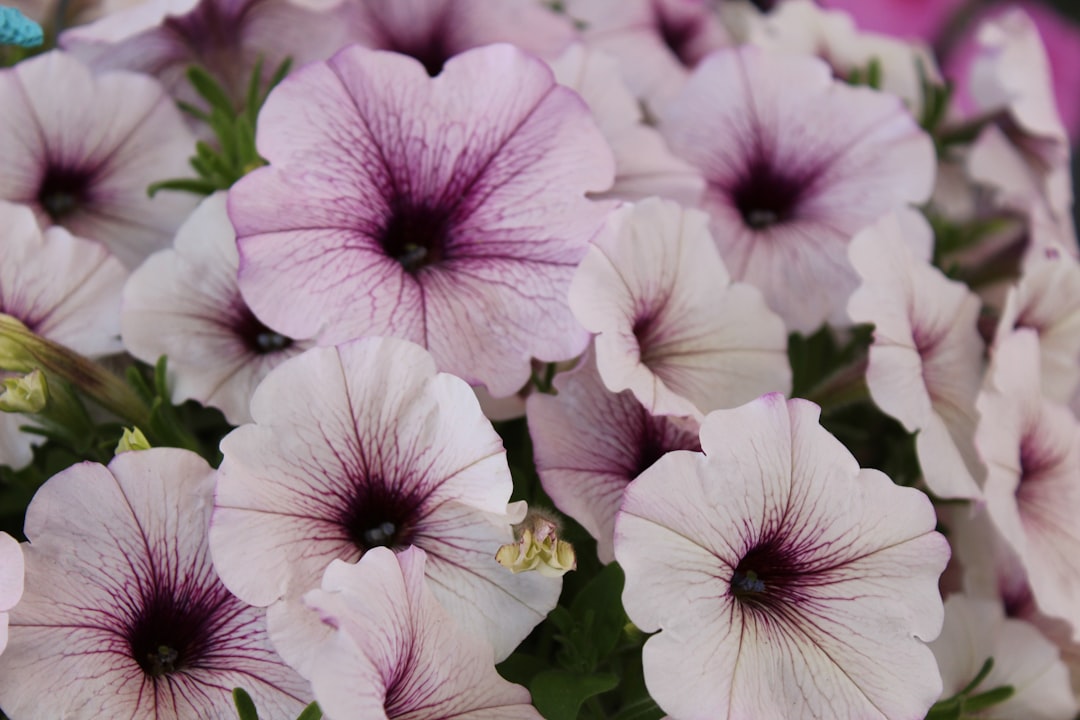Petunias are beloved for their vibrant colors and delightful fragrance, making them a favorite among gardeners and flower enthusiasts alike. These charming flowers belong to the Solanaceae family and are known for their ability to bloom profusely throughout the growing season. Propagating petunias can be a rewarding experience, allowing you to expand your garden without the need for purchasing new plants each year.
Propagation refers to the process of creating new plants from existing ones. For petunias, this can be achieved through various methods, including seed sowing and taking cuttings.
Each method has its own set of advantages and challenges, but both can lead to a flourishing display of petunias in your garden. By learning about the different propagation techniques, you can choose the one that best suits your gardening style and the specific conditions of your growing environment.
Key Takeaways
- Petunias can be propagated through cuttings, which is a simple and effective method.
- The best time to propagate petunias is in the spring or early summer when the plants are actively growing.
- The propagation medium should be well-draining and sterile to prevent diseases and promote healthy root development.
- Take cuttings from healthy, disease-free petunia plants to ensure successful propagation.
- Provide ideal growing conditions such as warmth, humidity, and bright indirect light for rooted cuttings to thrive.
Choosing the Right Propagation Method
When it comes to propagating petunias, selecting the right method is crucial for success. The two most common methods are seed propagation and vegetative propagation through cuttings. Seed propagation involves collecting seeds from mature petunia plants and sowing them in a suitable medium.
This method is ideal for those who enjoy the thrill of nurturing plants from their very beginnings and want to explore different petunia varieties. On the other hand, vegetative propagation through cuttings is often preferred for its speed and reliability. This method allows you to create clones of your favorite petunia plants, ensuring that the new plants will have the same characteristics as the parent.
If you have a particularly stunning petunia that you want to replicate, taking cuttings is an excellent choice. Whichever method you choose, understanding the nuances of each will help you achieve a successful propagation experience.
Selecting the Best Time for Propagation

Timing is everything when it comes to propagating petunias. The best time to start your propagation efforts largely depends on your local climate and whether you are using seeds or cuttings. Generally, spring is considered the ideal season for both methods, as temperatures are warming up and daylight hours are increasing.
This creates a favorable environment for growth and development. If you are opting for seed propagation, it’s wise to start your seeds indoors about 8 to 10 weeks before the last expected frost date in your area. This gives your seedlings a head start, allowing them to establish strong roots before being transplanted outdoors.
For cuttings, late spring or early summer is often the best time to take them, as this is when petunias are actively growing and producing lush foliage. By carefully considering the timing of your propagation efforts, you can set yourself up for success.
Preparing the Propagation Medium
| Medium | Preparation Time | Temperature | pH Level |
|---|---|---|---|
| Agar | 30 minutes | 121°C | 7.0 |
| Broth | 20 minutes | 121°C | 7.2 |
| Gelatin | 40 minutes | 100°C | 6.8 |
A suitable propagation medium is essential for nurturing petunia cuttings or seeds. The right mix will provide adequate drainage while retaining enough moisture to support healthy root development. A common choice for petunia propagation is a blend of peat moss, perlite, and vermiculite.
This combination offers excellent aeration and drainage, which is crucial for preventing root rot. Before planting your seeds or cuttings, it’s important to prepare your propagation medium properly. Start by mixing equal parts of peat moss and perlite or vermiculite in a clean container.
This will create a light and fluffy medium that encourages healthy root growth. If you’re using seed trays or pots, ensure they have drainage holes to prevent water from pooling at the bottom. By taking the time to prepare an optimal propagation medium, you’ll give your petunias the best chance at thriving.
Taking Cuttings from Healthy Petunia Plants
Taking cuttings from healthy petunia plants is a straightforward process that can yield impressive results. Begin by selecting a vigorous parent plant that exhibits strong growth and vibrant blooms. Look for stems that are healthy and free from any signs of disease or damage.
Ideally, choose stems that are about 4 to 6 inches long and have several sets of leaves. Using clean, sharp scissors or pruning shears, make a clean cut just below a leaf node. This node is where roots are most likely to develop, so it’s important to include it in your cutting.
After taking your cuttings, remove any lower leaves that may be submerged in the propagation medium to prevent rot. It’s also beneficial to dip the cut end of each cutting in rooting hormone, which can help stimulate root growth. With your cuttings prepared, you’re ready to move on to rooting them successfully.
Rooting the Cuttings

Rooting petunia cuttings requires patience and attention to detail. After placing your cuttings in the prepared propagation medium, it’s essential to provide them with the right conditions for root development. Start by gently watering the medium to ensure it is moist but not soggy.
Covering the cuttings with a plastic dome or a clear plastic bag can help maintain humidity levels, which is crucial during this stage. Place your cuttings in a warm location with indirect sunlight. Too much direct sunlight can cause stress and hinder root development, while too little light may slow down growth.
Check on your cuttings regularly, ensuring that the medium remains moist but not overly wet. In about two to three weeks, you should begin to see new growth emerging from the top of the cuttings, indicating that roots are forming below the surface.
Providing the Ideal Growing Conditions for Rooted Cuttings
Once your petunia cuttings have developed roots, it’s time to transition them into their ideal growing conditions. At this stage, it’s important to gradually acclimate them to their new environment. Start by removing any plastic coverings for short periods each day, allowing them to adjust to lower humidity levels gradually.
As your rooted cuttings continue to grow, ensure they receive plenty of bright but indirect sunlight. A south-facing window or a spot with filtered light works well for young plants. Additionally, monitor their watering needs closely; while they require consistent moisture, be careful not to overwater them as this can lead to root rot.
Fertilizing with a diluted liquid fertilizer every couple of weeks can also promote healthy growth during this stage.
Transplanting Rooted Cuttings
Transplanting rooted cuttings into larger pots or directly into your garden marks an exciting milestone in your propagation journey. Once your cuttings have established a robust root system and are showing healthy growth above ground, they are ready for this next step. If transplanting into pots, choose containers that are at least 4-6 inches in diameter with good drainage holes.
Before transplanting outdoors, ensure that all danger of frost has passed in your area. If you’re planting in a garden bed, select a location that receives full sun for at least six hours a day—petunias thrive in bright light! Gently remove each cutting from its current container, taking care not to damage the roots.
Place them in their new homes at the same depth they were previously growing and water them thoroughly after planting.
Caring for Newly Propagated Petunias
Caring for newly propagated petunias is essential for ensuring their continued health and vibrancy as they grow into mature plants. Regular watering is crucial during their initial establishment phase; keep the soil consistently moist but not waterlogged. As they settle into their new environment, you may notice that they require less frequent watering.
Fertilizing your petunias every few weeks with a balanced fertilizer will help promote lush foliage and abundant blooms throughout the growing season. Additionally, deadheading spent flowers encourages more blooms and keeps your plants looking tidy. Keep an eye out for pests such as aphids or spider mites; if you notice any signs of infestation, treat them promptly with insecticidal soap or neem oil.
Troubleshooting Common Propagation Issues
Even with careful planning and execution, challenges can arise during petunia propagation. One common issue is poor root development in cuttings, which may occur if humidity levels are too low or if they are exposed to too much direct sunlight too soon. If you notice that your cuttings aren’t rooting well, consider adjusting their environment by increasing humidity or providing more shade.
Another potential problem is damping-off disease, which can affect seedlings if they are kept too wet or in poorly drained soil. To prevent this issue, ensure that your propagation medium is well-draining and avoid overwatering your seedlings or cuttings. If damping-off does occur, it’s best to discard affected plants and start fresh with new seeds or cuttings from healthy parent plants.
Enjoying the Fruits of Your Propagation Efforts
After all your hard work and dedication to propagating petunias, there’s nothing quite like enjoying the fruits of your labor as these beautiful flowers bloom in your garden or home. Watching them flourish brings immense satisfaction and joy as you witness their vibrant colors brighten up any space they inhabit. Whether you choose to display them in pots on your patio or create stunning flower beds filled with an array of petunia varieties, these flowers will undoubtedly bring beauty and cheer throughout the growing season.
Take time to appreciate their delicate petals swaying gently in the breeze and their sweet fragrance filling the air—a true testament to nature’s wonders and your gardening skills. FAQ Section Do petunia flowers grow back every year?
Petunias are typically grown as annuals in most climates, meaning they complete their life cycle within one growing season and do not return year after year without replanting. However, in warmer climates (USDA zones 10-11), some varieties may behave as perennials.
Do petunia flowers close at night?
Yes, petunia flowers tend to close at night or during cloudy weather as part of their natural behavior. This phenomenon helps protect their delicate petals from moisture and potential damage. Do petunia flowers need full sun?
Petunias thrive best in full sun conditions, requiring at least six hours of direct sunlight each day for optimal growth and blooming.
Do petunia flowers bloom all summer?
Yes!
Do petunia flowers have seeds?
Yes, petunias produce seeds after flowering; however, collecting seeds from hybrid varieties may not yield plants identical to the parent due to genetic variations.
How long does it take for petunia cuttings to root?
Petunia cuttings typically take about two to three weeks to develop roots under ideal conditions. Can I propagate petunias from store-bought plants?
Yes! You can take cuttings from healthy store-bought petunias as long as they are free from disease and pests.
What should I do if my petunia seedlings are leggy?
Leggy seedlings often indicate insufficient light; consider moving them closer to a light source or providing supplemental grow lights until they become sturdier. By following these guidelines on propagating petunias, you’ll be well on your way to creating a stunning display of these lovely flowers in your garden! Happy gardening!
If you’re interested in learning more about propagating plants, you may want to check out this article on how to amend sandy soil. Understanding the soil composition is crucial when it comes to successfully propagating petunias or any other plant. By improving the quality of your soil, you can create an optimal environment for your plants to thrive.
FAQs
What is the best time to propagate petunias?
Petunias are best propagated in the spring, when the weather is warm and the plants are actively growing.
What are the different methods for propagating petunias?
Petunias can be propagated through stem cuttings, division, or by collecting and planting seeds.
How do you propagate petunias from stem cuttings?
To propagate petunias from stem cuttings, select a healthy, non-flowering stem and cut it just below a leaf node. Remove the lower leaves and place the cutting in a pot with well-draining soil. Keep the soil moist and the cutting in a warm, bright location until roots develop.
Can petunias be propagated by division?
Yes, petunias can be propagated by division. This involves separating the root ball of an established plant into smaller sections and replanting them in new pots or garden beds.
How long does it take for petunia cuttings to root?
Petunia cuttings typically take 2-3 weeks to develop roots when propagated in a warm, bright location with consistently moist soil.
What is the best soil for propagating petunias?
A well-draining potting mix with a good balance of organic matter and perlite or vermiculite is ideal for propagating petunias. This will provide the necessary nutrients and aeration for healthy root development.

